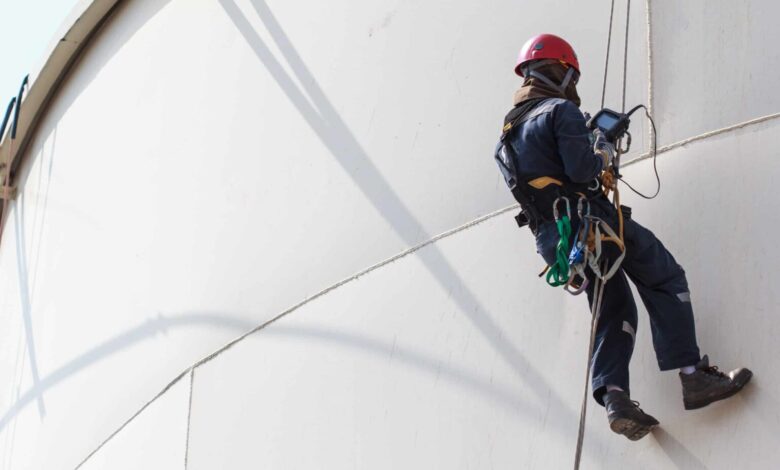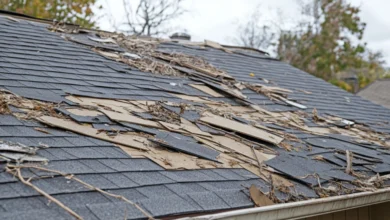How to Prepare Your Team for an API 653 Inspection?

API 653 inspections are a big deal. They determine whether your storage tank is safe, compliant, and fit for service. Failing to prepare can lead to costly repairs, unexpected downtime, and even regulatory penalties. But with the right plan, your team can sail through the tank inspection services process without a hitch.
So how do you make sure your team is ready? It’s not just about having the right documents on hand—it’s about creating a culture of safety, accountability, and proactive maintenance. In this guide, we’ll walk you through everything you need to do before an API 653 inspection, from training your staff to ensuring your tank is in top condition.
Understanding the Scope of an API 653 Inspection
API 653 is the industry standard for inspecting, repairing, and maintaining aboveground storage tanks. This inspection ensures that tanks meet safety, structural, and environmental regulations. The assessment covers critical areas such as shell integrity, roof conditions, foundation stability, and—most importantly—tank bottom corrosion.
Inspections are required at least every 10 years, but depending on your tank’s service conditions, you may need them more frequently. If your tank holds hazardous substances, operates under extreme conditions, or has shown signs of deterioration, expect tighter schedules.
Step 1: Review Past Inspection Reports
One of the first things an inspector will do is review previous inspection reports, so your team should do the same. These reports provide valuable insights into the tank’s condition, past repairs, and recurring issues.
Look for patterns in corrosion rates, previous repair recommendations, and outstanding maintenance work. If there are unresolved issues, now is the time to address them. Ignoring past recommendations is a red flag for inspectors and could result in compliance failures.
Step 2: Conduct a Preliminary In-House Inspection
Before the official inspection, perform a thorough internal review. This allows your team to catch and resolve minor issues before the inspector arrives. Areas to focus on include:
- Visual checks for rust, cracks, leaks, or deformation
- Ultrasonic thickness testing to measure corrosion levels
- Checking for settlement or structural shifts in the foundation
- Inspecting weld seams for potential weaknesses
- Ensuring cathodic protection systems are functioning properly
By identifying potential problems in advance, you can take corrective action early and avoid costly surprises during the official fiberglass tank inspection.
Step 3: Ensure All Documentation Is in Order
API 653 inspections are not just about the physical tank. Inspectors will also review your records to ensure compliance with industry regulations. Your team should gather and organize:
- Previous API 653 inspection reports
- Tank construction and repair records
- Material certifications and welding documentation
- Operational and maintenance logs
- Cathodic protection system test results
- Safety and environmental compliance records
Having all documents readily available speeds up the inspection process and demonstrates that your facility is well-managed.
Step 4: Train Your Team on Inspection Procedures
Your team should know what to expect before, during, and after the inspection. Conduct training sessions to ensure key personnel understand:
- The purpose and scope of API 653 inspections
- Their specific roles and responsibilities during the process
- How to communicate effectively with the inspector
- What actions to take if issues are found
Well-prepared employees make a strong impression on inspectors and show that your facility prioritizes compliance and safety.
Step 5: Coordinate with the Inspector
Establishing clear communication with the inspector before the assessment can prevent misunderstandings and delays. Reach out in advance to discuss:
- The inspection timeline and expected duration
- Any special requirements or focus areas
- Safety procedures they need to follow on-site
- The availability of key personnel during the inspection
By fostering a cooperative relationship with the inspector, you set the stage for a smoother process.
Step 6: Plan for Possible Repairs
Even if you’ve taken excellent care of your tank, inspections may uncover issues that require attention. Instead of scrambling at the last minute, have a repair strategy in place. Identify reliable contractors in advance and ensure your budget allows for unexpected maintenance work.
If the inspection reveals critical failures, you may need to take the tank out of service for repairs. Having a contingency plan for alternative storage or operational adjustments will minimize disruption to your facility.
Step 7: Prepare for Post-Inspection Follow-Ups
Once the inspection is complete, review the findings carefully. If any deficiencies are noted, address them as quickly as possible. Some issues may require immediate attention, while others may be monitored over time.
Follow up with the inspector to clarify any uncertainties and keep detailed records of all corrective actions taken. This ensures that when the next inspection rolls around, your facility is already ahead of the game.
Final Thoughts
API 653 inspections are a vital part of tank maintenance, but they don’t have to be stressful. By planning ahead, training your team, and keeping up with routine maintenance, you can turn the process into an opportunity rather than a headache.
A well-maintained tank means fewer compliance issues, lower repair costs, and—most importantly—a safer work environment. So take the time to prepare, and you’ll pass your API 653 inspection with confidence.



